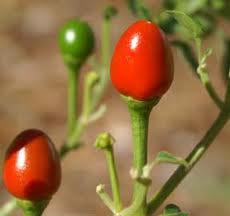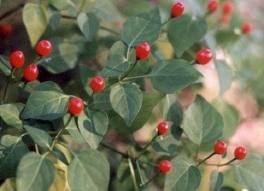I found this interesting as I never knew wild bird peppers grew this extensively in the wild in the US even some areas of the North.

 Bird Peppers Capsicum annuum var. glabriusculum: Hot Eats
Bird Peppers Capsicum annuum var. glabriusculum: Hot EatsA variety of wild peppers grow in many areas of Central and North America
North to Arizona east to Florida then up the coast to New York and Connecticut.
Commonly called “bird peppers” they are properly Capsicum annuum var. glabriusculum. For a little pepper the birds defend bravely, it has gone a long ways. Most of the natives of the Caribbean area called it some form of “aji” and the Spanish moved in with aji caballero, aji caribe, aji chivato and so on. However, the top dogs of the ancient Caribbean world were the Aztecs, and they called it ….chilli… and now you know.
They were originally named Capsicum annuum var. aviculare(annual peppers of the birds.) Birds, who have no need for botanist or nutritionists, know a good thing when they eat it. And bird peppers are good food. They have vitamins A and C, and a host of other compounds thought to prevent cancer and tumor. And they have heat.
Capsicum (KAP-sih-kum ) is from two Greek and Latin words, Kapto, to bite, and capsa, a box, in reference to the fruit shape. Annuum (ANN-yoo-um) means annual, and glabriusculum(glab-ree-us- KYEW-lum) means completely without hair. Saying “chili peppers” is then redundant, as chili means those hot little peppers.
IDENTIFICATION: Shrub, three to 10 feet tall, leaves ovate to ovate-lanceolate, pointed, one half to two inches long, sometimes much longer, four or five inches. Flowers white, yellow-green or lavender, five-lobed to half-inch wide. Fruit round, conical or elongated and pointed, one half-inch to an inch long, may change from white to yellow then purple to red, nearly hollow, a few small seeds, very pungent.
TIME OF YEAR: Seasonal in northern climes, year round in warmer areas
ENVIRONMENT: Hammocks, waste places, cultivated ground
METHOD OF PREPARATION: Ripe fruit as seasoning, leaves cooked as greens, rich in calcium, phosphorus, vitamins A and B.
http://www.eattheweeds.com